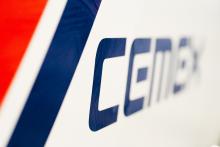CEMEX has developed a new proprietary technology that monitors concrete during its pouring and hardening to measure its strength in real time during construction. The technology has been named Spider Tracker due to its spider-leg-like sensors.
With more precise and real-time information about the concrete hardening process, builders may remove the formwork, or moulds, at precisely the right moment and make informed decisions about the concrete mix they use in their projects. These decisions can result in time and cost savings and potentially a reduction in a project's carbon footprint because real-time information on the product mix would reduce the unnecessary use of cement, which has a higher carbon footprint. Through an optimised concrete composition, a specific jobsite like a tunnel or bridge can achieve a CO2 reduction of up to 13% for a given level of strength.
"Spider Tracker is a true innovation for the building materials industry and another way we are providing a superior customer experience by putting new technology at their reach," said Fernando A. González, CEO of CEMEX. "This latest achievement is further proof of our commitment to sustainability and the success of our Digital Innovation in Motion program."
Spider Tracker's sensors are placed in fresh concrete to measure its temperature at various points during the setting process. That information is relayed to thermo-tracking cylinders built with the same concrete mix as the project and exposed to the same temperature through special containers. These cylinders recreate the hardening process at the same rate as the poured concrete, replicating resistance with more precision than other methods commonly available. By testing their resistance, builders may determine when their structure has reached its desired compressive strength.
Other real-time monitoring technologies for concrete are based on a mathematical predictive formula. These traditional technologies may be off by up to 80% in their estimation of a structure's actual compressive strength. Spider Tracker has proven to be accurate by up to 95%, a game-changing innovation that gives the most accurate data available in the market.
To provide accurate information, Spider Tracker uses a thermographic camera to place the sensors in the coldest points of the structure. The technology also allows recording, controlling, and viewing of the entire process from a mobile application.
Spider Tracker is specially made for large-scale projects such as bridges and multi-story buildings that require expensive pieces of formwork that need to be removed and reused. The technology has been shown to reduce construction times by as much as 40% in real-world tests. It has been used in the construction of the Science Building at the Pontificia Universidad Javeriana in Bogotá, Colombia. It is currently in the process of being scaled into new geographies.
CEMEX is actively driving innovation in the construction industry by unlocking new value opportunities for its current and potential customers while boosting its internal innovation and efficiency. CEMEX's Digital Innovation in Motion program encompasses CEMEX's innovation efforts in its commercial offering, back-office processes, and smart manufacturing. The Spider Tracker technology is the result of work done by the company's global R&D collaboration network, headed by the CEMEX Research Center based in Switzerland. Spider Tracker's proprietary technology is patent pending.








